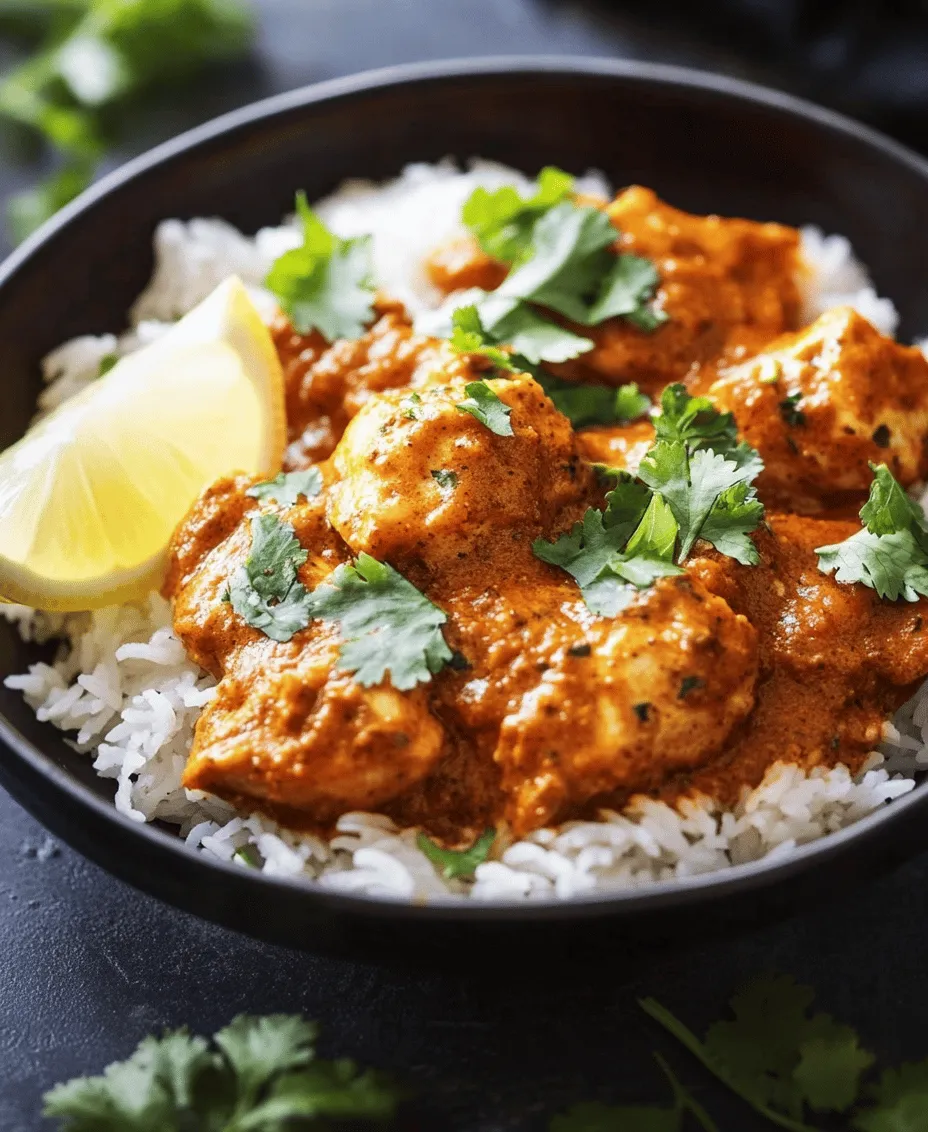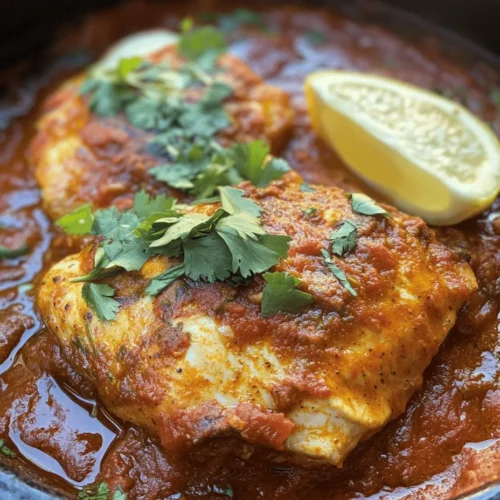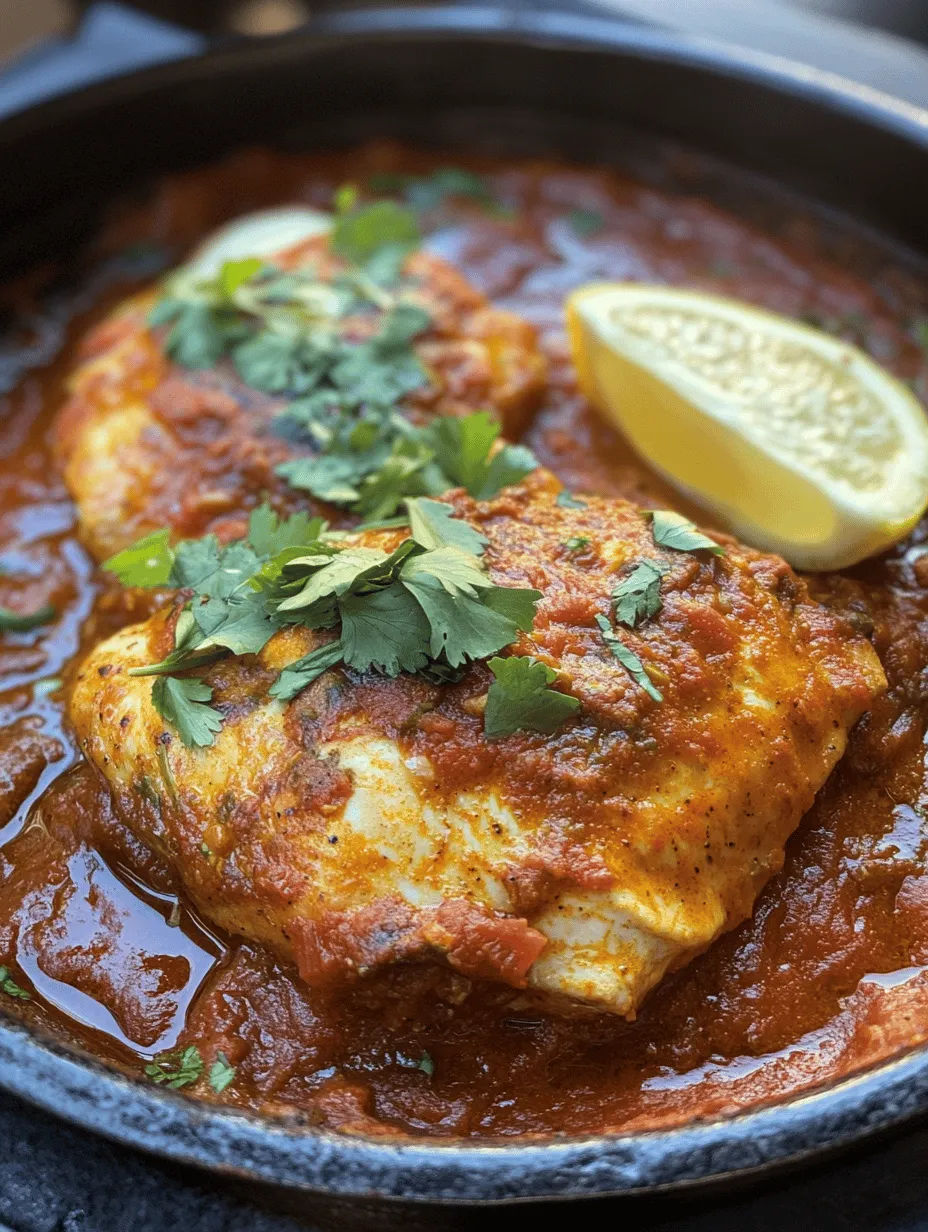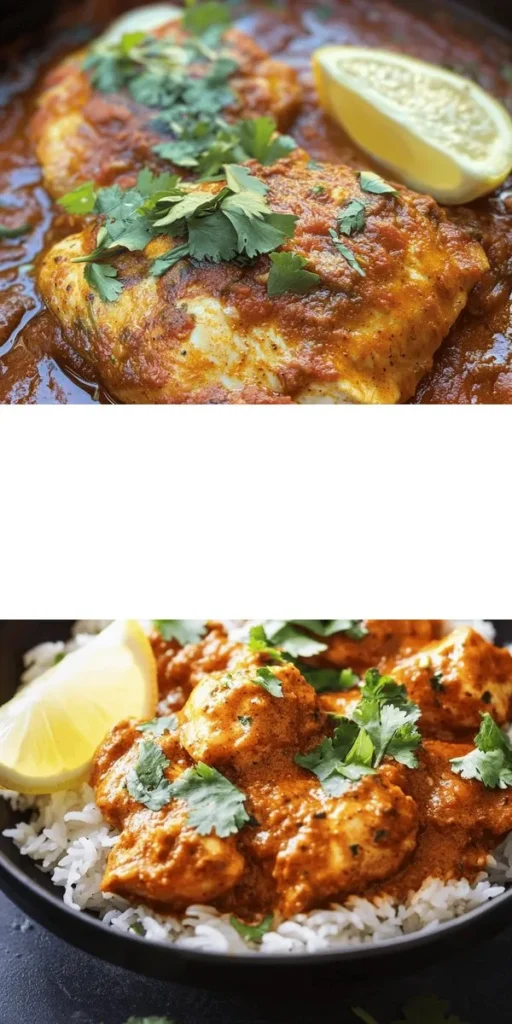Introduction
In the realm of culinary delights, few dishes can rival the aromatic and rich flavors of Chicken Tikka Masala. This beloved Indian dish, popularized by celebrity chef Gordon Ramsay, offers a perfect balance of spices and creamy texture that makes it a favorite in households around the world. The dish is not only a celebration of flavors but also a testament to the art of fusion cuisine, combining the best of Indian spices with Western cooking techniques. In this article, we will explore the origins of Chicken Tikka Masala, the process of creating it from scratch, and the delightful experience it offers. Whether you’re a seasoned chef or a novice in the kitchen, this recipe will guide you through each step to ensure you create a dish that tantalizes the taste buds.
The Origins of Chicken Tikka Masala
Understanding the Roots of Chicken Tikka Masala
Chicken Tikka Masala has an intriguing history that reflects the evolution of South Asian cuisine and its integration into British culinary culture. While the precise origins of the dish are hotly debated, it is generally believed to have evolved from traditional Indian recipes of marinated, grilled chicken known as “tikka.” The word “tikka” itself refers to pieces or chunks, typically marinated in a mixture of yogurt and spices before being cooked in a tandoor (a traditional clay oven).
Historical Background: The Dish’s Evolution from Traditional Indian Cuisine
The origins of Chicken Tikka Masala can be traced back to the Indian subcontinent, where marinated chicken has been enjoyed for centuries. However, the dish as we know it today likely took form in the UK during the 1960s and 1970s, when a significant number of South Asian immigrants began to settle in Britain. Seeking to cater to local tastes, chefs began to adapt traditional Indian recipes, creating a more creamy and tomato-based sauce that appealed to the British palate. This adaptation led to the development of Chicken Tikka Masala, which quickly gained popularity and became a staple in Indian restaurants across the UK.
Cultural Significance: How It Became a Staple in British-Indian Culinary Fusion
The rise of Chicken Tikka Masala is not just a culinary phenomenon but also a cultural one. The dish has been embraced by British society, often being referred to as “Britain’s national dish.” Its widespread popularity signifies the melting pot of cultures, showcasing how food can bridge gaps and bring people together. The dish’s unique blend of spices and flavors represents the rich heritage of Indian cuisine while also reflecting the tastes and preferences of British diners.
The Debate: Is It Authentically Indian or a British Invention?
The authenticity of Chicken Tikka Masala has sparked much debate among food enthusiasts and culinary historians. Some argue that it is an authentic Indian dish that has simply been adapted for Western tastes, while others contend that it is a wholly British creation. Regardless of its origins, one thing remains clear: Chicken Tikka Masala has made a significant impact on both Indian and British cuisine, earning its place as a beloved dish in households around the world.
Key Ingredients for Chicken Tikka Masala
To truly master Gordon Ramsay’s Chicken Tikka Masala, it’s essential to understand the key ingredients that contribute to its rich flavor profile. Each component plays a vital role in achieving the perfect balance of spices and creaminess that defines this dish.
Chicken: The Choice of Boneless Chicken Thighs and Their Advantages
The primary ingredient in Chicken Tikka Masala is, of course, chicken. For this recipe, boneless chicken thighs are recommended over chicken breasts. The reason for this preference lies in the texture and flavor of the meat. Chicken thighs are juicier and more flavorful, making them less likely to dry out during the cooking process. Additionally, their higher fat content helps to enhance the overall richness of the dish, adding depth to the flavors.
Yogurt: Its Role in Marinating and Tenderizing the Chicken
Yogurt is a crucial ingredient in the marinade for Chicken Tikka Masala. It serves multiple purposes: not only does it add a tangy flavor, but it also helps to tenderize the chicken. The acidity in yogurt breaks down the proteins in the meat, resulting in a more tender and flavorful dish. Marinating the chicken in yogurt and spices for at least a few hours, or even overnight, allows the flavors to penetrate the meat, ensuring a delicious final outcome.
Spices: A Breakdown of Garam Masala, Cumin, Coriander, Turmeric, and Paprika
The spice blend is what truly sets Chicken Tikka Masala apart from other dishes. The signature flavor profile comes from a harmonious combination of spices, including:
– Garam Masala: A fragrant blend of spices that adds depth and warmth to the dish. It typically includes cardamom, cinnamon, cloves, and black pepper.
– Cumin: This spice adds a warm, earthy flavor that is essential in Indian cooking.
– Coriander: With its slightly citrusy notes, coriander enhances the overall flavor of the dish.
– Turmeric: Known for its vibrant yellow color, turmeric adds a subtle earthiness and is also known for its health benefits.
– Paprika: This spice provides a mild heat and contributes to the dish’s characteristic color.
Tomatoes: Importance of Using Pureed Canned Tomatoes for the Sauce
Tomatoes are a key component of the sauce in Chicken Tikka Masala. For the best flavor and consistency, using pureed canned tomatoes is recommended. Canned tomatoes are typically harvested at peak ripeness and processed quickly, retaining their natural sweetness and acidity. This makes them an ideal choice for creating a rich and smooth sauce that complements the spiced chicken perfectly.
Coconut Milk vs. Double Cream: Choosing the Right Ingredient for Creaminess
When it comes to achieving that luscious, creamy texture in Chicken Tikka Masala, you have a choice between coconut milk and double cream. Coconut milk provides a dairy-free alternative that adds a subtle sweetness and complements the spices beautifully. On the other hand, double cream offers a more traditional approach, resulting in an ultra-rich sauce that is incredibly indulgent. The choice between the two ultimately depends on personal preference and dietary restrictions.
Fresh Cilantro and Lemon: Their Role in Garnishing and Balancing Flavors
To finish off your Chicken Tikka Masala, a sprinkle of fresh cilantro and a squeeze of lemon juice are essential. Cilantro adds a pop of freshness and color, while lemon juice brightens the dish and balances the richness of the sauce. These finishing touches elevate the flavors and make the dish visually appealing.
Preparing Your Chicken Tikka Masala
Now that we’ve covered the essential ingredients, it’s time to dive into the step-by-step instructions for preparing Gordon Ramsay’s Chicken Tikka Masala. Following these meticulous steps will ensure a dish that is not only delicious but also visually appealing.
1. Marinate the Chicken: Start by cutting your boneless chicken thighs into bite-sized pieces. In a bowl, combine yogurt, garam masala, cumin, coriander, turmeric, paprika, salt, and a squeeze of lemon juice. Add the chicken pieces to the marinade, ensuring they are well-coated. Cover the bowl with plastic wrap and refrigerate for at least 1 hour, but ideally overnight for maximum flavor.
2. Prepare the Sauce: In a large skillet or saucepan, heat some oil over medium heat. Add finely chopped onions and cook until they are soft and translucent. This step is crucial as it forms the base of the sauce. Next, add minced garlic and ginger, cooking for another minute until fragrant.
3. Add the Spices: Stir in the remaining spices (garam masala, cumin, coriander, turmeric, and paprika) and cook for an additional minute. This allows the spices to release their essential oils, enhancing their flavors.
4. Incorporate the Tomatoes: Add the pureed canned tomatoes to the pan, stirring well to combine. Allow the mixture to simmer for about 10-15 minutes, letting the flavors meld together and the sauce thicken.
5. Cook the Chicken: While the sauce is simmering, preheat your grill or broiler. Remove the marinated chicken from the refrigerator and thread the pieces onto skewers. Grill the chicken for about 8-10 minutes, turning occasionally, until cooked through and slightly charred.
6. Combine and Simmer: Once the chicken is grilled, add it to the simmering sauce. Stir in your choice of coconut milk or double cream, adjusting the consistency to your liking. Allow the dish to simmer for another 5-10 minutes, letting the flavors meld together.
7. Garnish and Serve: When ready to serve, garnish your Chicken Tikka Masala with freshly chopped cilantro and a squeeze of lemon juice. Pair it with basmati rice or naan bread for a complete meal that will impress your family and friends.
By following these steps, you’ll create a Chicken Tikka Masala that captures the essence of Gordon Ramsay’s culinary mastery, showcasing vibrant flavors and a creamy texture that is sure to delight. Stay tuned for the next part of the article, where we will share additional tips for perfecting your Chicken Tikka Masala and answer some common questions about this iconic dish.

Marinating the Chicken: Techniques for Maximum Flavor Infusion
Marination is a crucial step in achieving the deep, rich flavors characteristic of Gordon Ramsay’s Chicken Tikka Masala. To start, you’ll want to prepare a marinade that will infuse the chicken with spices and tenderness.
1. Choose the Right Chicken: Use boneless, skinless chicken thighs for the best results. Thighs are more flavorful and remain juicy during cooking compared to chicken breasts.
2. Marinade Ingredients: In a large bowl, combine plain yogurt, lemon juice, garlic paste, ginger paste, and a blend of spices—cumin, coriander, garam masala, turmeric, and chili powder. The yogurt acts as a tenderizer, while the acid from the lemon juice brightens the flavor profile.
3. Marination Time: Cover the bowl with plastic wrap and refrigerate for at least 2 hours, but for optimal flavor, aim for 6-12 hours. The longer the chicken sits in the marinade, the more the flavors will penetrate the meat.
Cooking the Chicken: Tips for Achieving That Perfect Char
Once the chicken has marinated, it’s time to cook it to perfection. The goal is to achieve a beautiful char while ensuring the chicken remains juicy.
1. Preheat Your Grill or Oven: If using a grill, preheat it to a medium-high heat. Alternatively, you can use a heavy skillet or cast-iron pan over medium-high heat.
2. Oil the Surface: Lightly oil the grill grates or the pan to prevent sticking. This also aids in achieving that sought-after char.
3. Cook in Batches: Avoid overcrowding the grill or pan, as this can lead to steaming rather than searing. Cook the chicken in batches, allowing space between each piece.
4. Cooking Time: Cook the chicken for about 5-7 minutes on each side or until the internal temperature reaches 165°F (75°C). The exterior should have a nice char while the inside stays moist.
Building the Sauce: Layering Flavors Through Sautéing Onions, Garlic, and Ginger
With the chicken perfectly cooked, it’s time to focus on the sauce, which is where the magic happens.
1. Sauté Onions: In a large saucepan over medium heat, add a generous amount of ghee or vegetable oil. Once hot, add finely chopped onions. Sauté them until they turn golden brown, which can take about 10-15 minutes. This caramelization process builds sweetness and depth in your sauce.
2. Add Garlic and Ginger: Once the onions are ready, stir in minced garlic and ginger. Cook for an additional 2-3 minutes until fragrant, ensuring not to let them burn.
Incorporating Spices: The Science Behind Cooking Spices for Optimal Flavor
To unlock the full potential of your spices, sautéing them is key.
1. Spice Medley: Add ground spices—cumin, coriander, garam masala, and turmeric—into the onion mixture. This step allows the spices to bloom, releasing their essential oils and intensifying the flavor.
2. Cooking Time: Allow the spices to cook for about 1-2 minutes, stirring constantly to prevent burning. You should start to smell the aromatic qualities of the spices as they meld with the onion, garlic, and ginger.
Creating the Creamy Base: Combining Tomatoes and Coconut Milk for a Luscious Sauce
The creamy base is what makes Chicken Tikka Masala indulgent and comforting.
1. Tomato Incorporation: Pour in crushed tomatoes (or tomato puree) to the sautéed mixture. Stir well and let it simmer for about 10 minutes, allowing the flavors to meld and the tomatoes to break down.
2. Add Coconut Milk: To achieve that signature creaminess, add a can of coconut milk. Stir to combine and let the sauce simmer for an additional 5-10 minutes. The coconut milk balances the acidity of the tomatoes and creates a luscious texture.
Final Cooking: Ensuring the Chicken is Tender and Fully Cooked
Now it’s time to bring everything together.
1. Combine Chicken and Sauce: Add the grilled chicken pieces into the sauce, ensuring they are well-coated. Let the mixture cook together for another 10 minutes on low heat. This allows the chicken to absorb the flavors of the sauce while keeping it tender.
2. Taste and Adjust: Before serving, taste the sauce and adjust seasoning as needed. You may want to add more salt, a pinch of sugar to balance acidity, or a splash of lemon juice for brightness.
Serving Suggestions for Chicken Tikka Masala
Enhancing the dining experience goes beyond the dish itself; it’s about how you present it.
1. Choosing the Right Accompaniments: Chicken Tikka Masala pairs beautifully with basmati rice, which soaks up the sauce, or with warm naan bread, perfect for dipping. You can also serve it with both for a complete meal.
2. Garnishing Ideas: Elevate your presentation by garnishing the dish with freshly chopped cilantro and lemon wedges. This adds a pop of color and freshness, making the dish visually appealing.
3. Pairing Beverages: Complement your meal with a refreshing beverage. A chilled glass of white wine, such as Sauvignon Blanc, or a mango lassi can enhance the flavors of the dish and provide a nice contrast to the spices.
Nutritional Insights of Chicken Tikka Masala
Understanding the nutritional composition of Chicken Tikka Masala can help you enjoy it mindfully.
1. Caloric Breakdown: A typical serving of Chicken Tikka Masala can range from 400 to 600 calories, depending on the ingredients used and portion sizes. The yogurt and coconut milk add creaminess, while the spices contribute minimal calories but high flavor.
2. Healthier Alternatives: To create a lighter version of this dish, consider using low-fat yogurt and reducing the amount of coconut milk. You can add more vegetables, such as bell peppers or spinach, to increase the nutritional value without significantly changing the flavor.
3. Balancing Indulgence: Enjoying Chicken Tikka Masala in moderation can fit into a balanced diet. Pair it with a side salad and opt for whole-grain naan or brown rice to boost fiber intake.
Conclusion
Gordon Ramsay’s Chicken Tikka Masala is more than just a meal; it’s a culinary experience that showcases the vibrant flavors of Indian cuisine. By following the steps outlined in this article, you can recreate an authentic version of this dish in your own kitchen. Whether it’s for a family dinner or a special occasion, this recipe promises satisfaction and a taste of cultural fusion that everyone will enjoy. Embrace the art of cooking and bring the restaurant experience home with this delightful Chicken Tikka Masala. Enjoy the process, share the meal, and savor every flavorful bite that this iconic dish has to offer.



